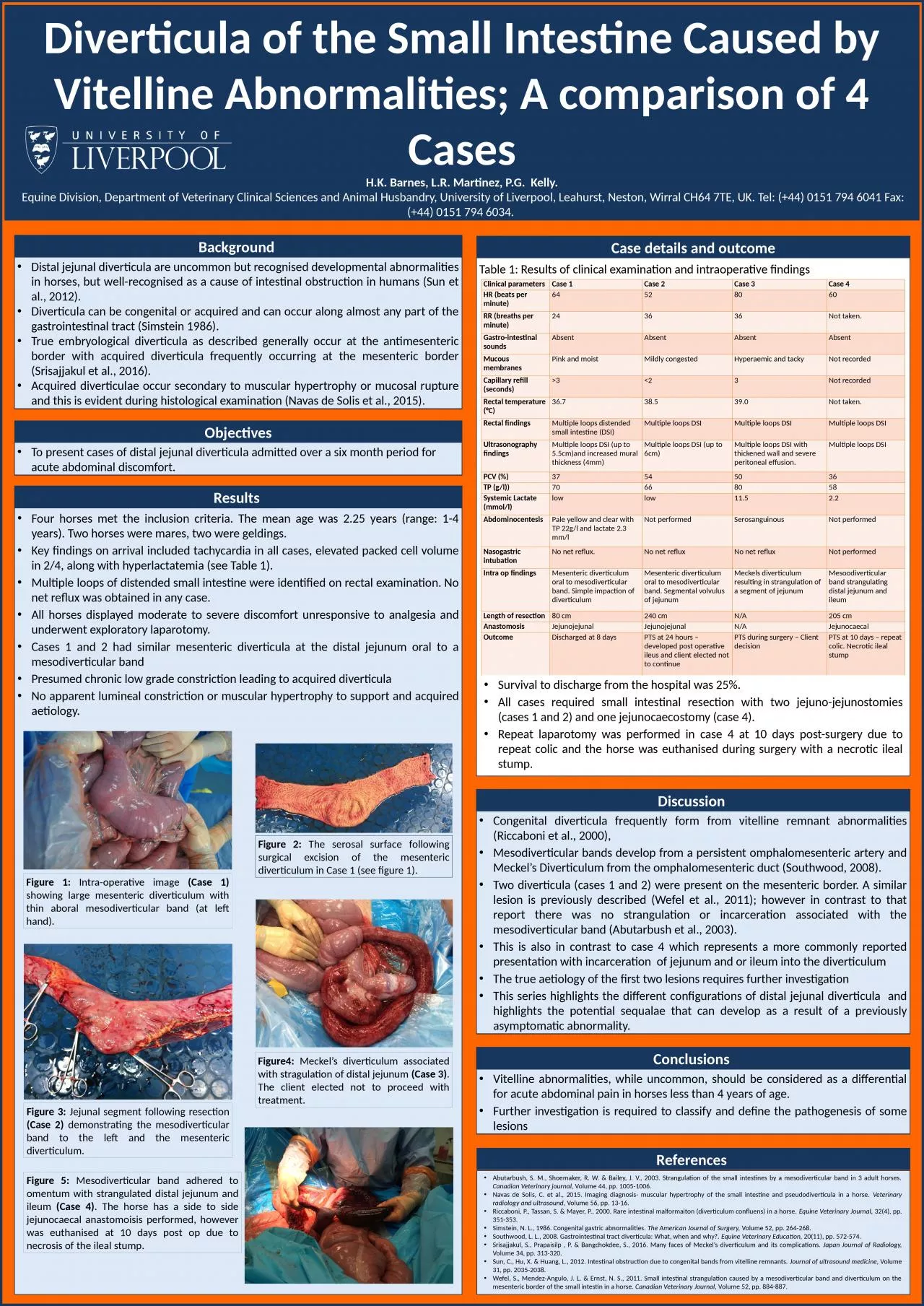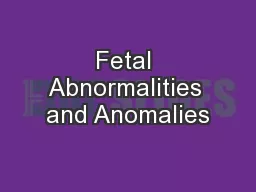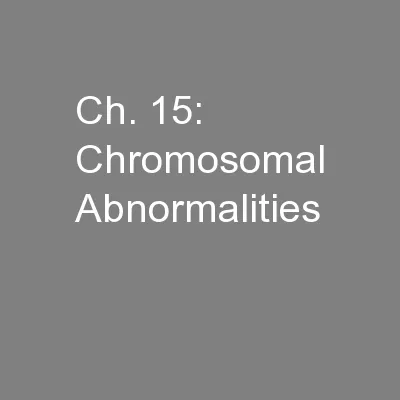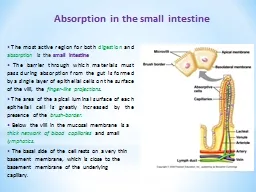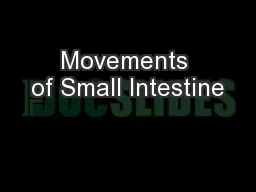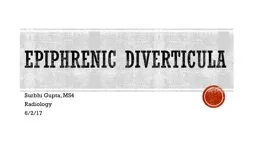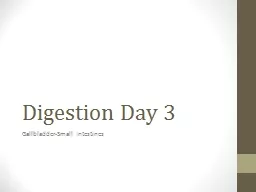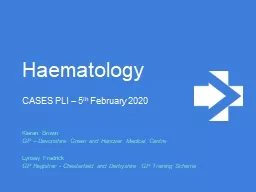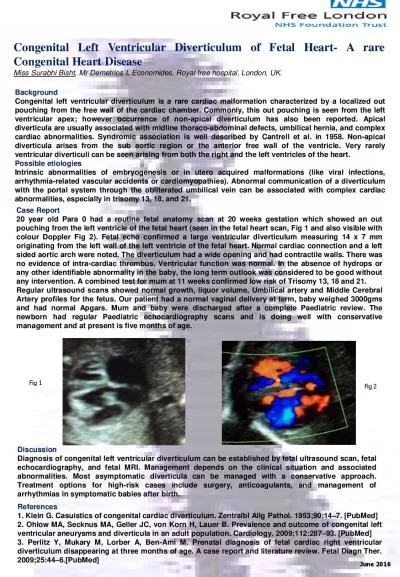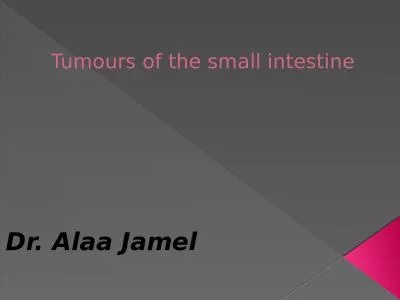PPT-Diverticula of the Small Intestine Caused by Vitelline Abnormalities; A comparison of
Author : anderson | Published Date : 2024-02-09
HK Barnes LR Martinez PG Kelly Equine Division Department of Veterinary Clinical Sciences and Animal Husbandry University of Liverpool Leahurst Neston Wirral CH64
Presentation Embed Code
Download Presentation
Download Presentation The PPT/PDF document "Diverticula of the Small Intestine Cause..." is the property of its rightful owner. Permission is granted to download and print the materials on this website for personal, non-commercial use only, and to display it on your personal computer provided you do not modify the materials and that you retain all copyright notices contained in the materials. By downloading content from our website, you accept the terms of this agreement.
Diverticula of the Small Intestine Caused by Vitelline Abnormalities; A comparison of: Transcript
Download Rules Of Document
"Diverticula of the Small Intestine Caused by Vitelline Abnormalities; A comparison of"The content belongs to its owner. You may download and print it for personal use, without modification, and keep all copyright notices. By downloading, you agree to these terms.
Related Documents

